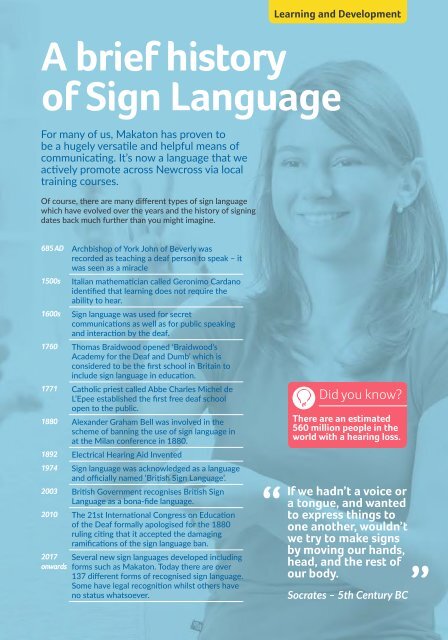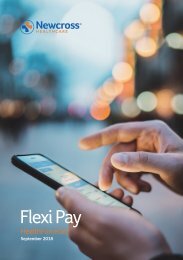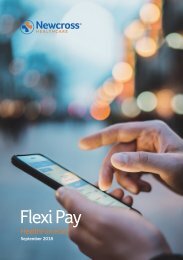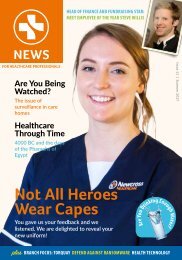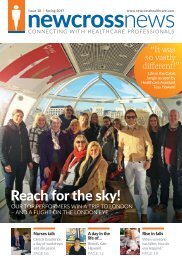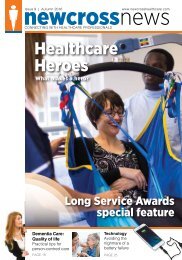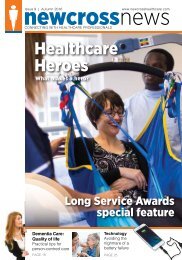Newcross News Issue 12
Winter edition
Winter edition
You also want an ePaper? Increase the reach of your titles
YUMPU automatically turns print PDFs into web optimized ePapers that Google loves.
Learning and Development<br />
A brief history<br />
of Sign Language<br />
For many of us, Makaton has proven to<br />
be a hugely versatile and helpful means of<br />
communicating. It’s now a language that we<br />
actively promote across <strong>Newcross</strong> via local<br />
training courses.<br />
Of course, there are many different types of sign language<br />
which have evolved over the years and the history of signing<br />
dates back much further than you might imagine.<br />
685 AD Archbishop of York John of Beverly was<br />
recorded as teaching a deaf person to speak – it<br />
was seen as a miracle<br />
1500s Italian mathematician called Geronimo Cardano<br />
identified that learning does not require the<br />
ability to hear.<br />
1600s Sign language was used for secret<br />
communications as well as for public speaking<br />
and interaction by the deaf.<br />
1760 Thomas Braidwood opened ‘Braidwood’s<br />
Academy for the Deaf and Dumb’ which is<br />
considered to be the first school in Britain to<br />
include sign language in education.<br />
1771 Catholic priest called Abbe Charles Michel de<br />
L’Epee established the first free deaf school<br />
open to the public.<br />
1880 Alexander Graham Bell was involved in the<br />
scheme of banning the use of sign language in<br />
at the Milan conference in 1880.<br />
1892 Electrical Hearing Aid Invented<br />
1974 Sign language was acknowledged as a language<br />
and officially named ‘British Sign Language’.<br />
2003 British Government recognises British Sign<br />
Language as a bona-fide language.<br />
2010 The 21st International Congress on Education<br />
of the Deaf formally apologised for the 1880<br />
ruling citing that it accepted the damaging<br />
ramifications of the sign language ban.<br />
2017<br />
onwards<br />
Several new sign languages developed including<br />
forms such as Makaton. Today there are over<br />
137 different forms of recognised sign language.<br />
Some have legal recognition whilst others have<br />
no status whatsoever.<br />
“<br />
Did you know?<br />
There are an estimated<br />
560 million people in the<br />
world with a hearing loss.<br />
If we hadn’t a voice or<br />
a tongue, and wanted<br />
to express things to<br />
one another, wouldn’t<br />
we try to make signs<br />
by moving our hands,<br />
head, and the rest of<br />
our body.<br />
Socrates – 5th Century BC<br />
“<br />
25


